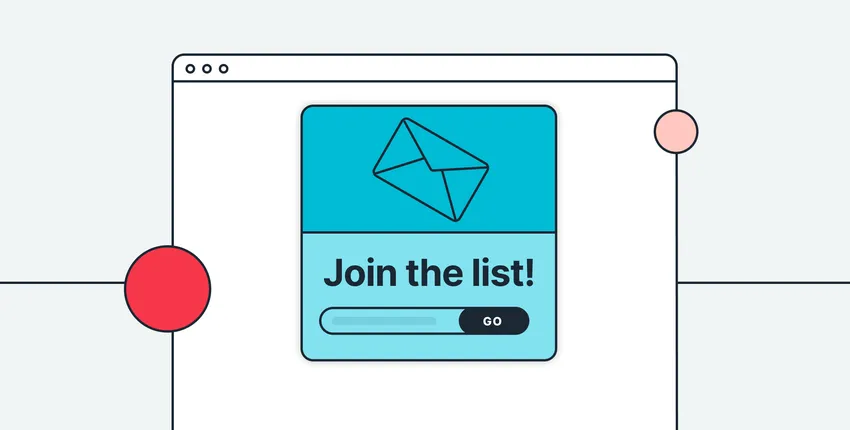
Last updated Thu Jun 12 2025
10 Effective Customer Retention Strategies & Examples [2025]
Ever wonder how businesses can keep people coming back?
Well, in this article, we'll talk about 10 customer retention ways they do it, with examples from B2C and B2B companies.
In this post:
Show the right message to the right visitor
Retain customers with AI-powered product recommendations and targeted marketing offers in popups and embedded forms
What is customer retention?
Customer retention refers to business strategies and actions to keep customers engaged and loyal over time. This practice focuses on creating a positive customer experience, ensuring satisfaction from every interaction, and building long-term customer relationships.
The truth is investing in customer retention is often more cost-effective than acquiring new customers. Statistics indicate that getting new customers can be five times more expensive than retaining current customers.
Customer retention strategies
Here are some tried and tested retention strategies that you can easily implement for your business:
Promote offers with onsite notifications
On-site notifications are a subtle yet effective way to engage returning visitors. Unlike popups, they appear as a social media-style feed in the website header. These notifications are designed to guide visitors through the sales funnel without being intrusive.
Here’s how onsite notifications look—
The Knitting Network, one of the UK’s biggest yarn stores, uses them to share different examples of time-limited offers with visitors:
Next—
Ferro & Company uses notifications to announce and increase engagement with its new products without cluttering the homepage:
You can create awesome personalized deals and offers for every customer group just by using the targeting in onsite notifications (you also get Shopify-first properties that allow to target registered customers based on their browsing behavior and cart content):
Many businesses have successfully engaged a lot of both new and returning customers thanks to this retention strategy.
Example:
The Knitting Network strategy used them to drive 748 new shoppers to pages with new products in just three days (also doubling their visitor engagement in terms of opened pages).
Here’s one of the campaigns:

“Through Wisepops' notification feed, our website has seen improvements in customer engagement, sales and brand identity. Our next objective is to personalise the customer journey to enhance the experience even more by targeting specific audiences.”

Use targeted website pop-ups
Website pop-ups will always be one of the top customer retention strategies to keep ecommerce visitors coming back and purchasing more.
Provided they’re valuable and relevant to visitors’ experience, of course. No one wants to be slapped with a popup with an uninteresting discount or a promise of more emails in their inbox.
But how to make popups personalized and relevant to visitors?
The answer is: using customer data and targeting.
Let me show you a couple of scenarios.
Let’s suppose you have viewed a product on an online store but for some reason had to leave without buying. So, you return to that store for one close look—and you see a small popup that welcomes you back and offers to go to that product in one click. That’s convenient!
That’s what Stumptown Coffee Roasters does, take a look:
Next up—
Let’s assume you are a repeat customer, visiting your favorite store once again for some window shopping. You checked out a few products and saw something you like, but you also think that you might be able to get a better deal if you wait for a price reduction, for example.
But then—
You get an awesome ecommerce popup message saying that one of those products qualifies for a mystery discount if bought with another similar or complementary product, like here:
That’s much more relevant than email popups (the “Subscribe to our newsletter” ones), and gives you a much better chance to score sales.
So, that’s the beauty of targeted popups—they are contextual and personalized. It’s not a matter of adding as many popups to your site, too (you can easily limit the number of popups a customer sees in one visit with any top popup software), but creating campaigns that improve the shopping experience.
So—
How do you actually create such campaigns?
Easy: you just use the targeting options in popup apps. For example, in Wisepops, creating a campaign that shows only to Returning visitors in the display settings:
Besides that, you can also create campaigns that show only on selected pages to visitors from specific locations.
Once you have more data about your visitors and customers, you can further segment them and offer them relevant offers and discounts. For example, in Wisepops you can use the shopping history and cart content to make campaigns:
The more data you collect, the more targeted your pop-ups could be.
If you’d like to get started with this customer retention tactic, I recommend you check out the targeting settings to see what you’ll be able to do.
Or—
Get a free account to engage your customers with targeted popups and forms:
Unlimited free trial, no cc needed

"We use Wisepops as a real marketing tool, to collect opt-in the easiest way in compliance with our strong brand identity. They offer multiple ways to customize and display pop-ups at every step of our customer journey, due to their really good segmentation of visitors. It is very easy to connect with Shopify and Klaviyo as well. We strongly recommend this app!"
Soi Paris, a Shopify App Store review
Provide an exceptional customer experience
If you want your customers to keep coming back, you must have an exceptional customer experience. Provide the basic way to communicate with your Support Team. And if you have the resources, go the extra mile. Here are a few ways to provide exceptional customer service:
Live Chat: Add a live chat to your site for instant communication.
Chatbots: Use chatbots for after-hours queries.
Direct Phone Lines: Offer phone support for complex issues, especially for VIP customers.
Social Media Interaction: Use platforms like Twitter to handle straightforward customer requests.
Get all the apps (live chat, chatbot, etc.) from the this list: Shopify apps you need to install
Offering various communication channels caters to different types of customers. Some may opt for chat or social media, while others might prefer reading through well-curated help articles or watching informative videos.
Zappos, the online clothing and shoe brand, provides exceptional customer service, especially through social media. They go the extra mile by handling simple customer inquiries through Twitter. Plus, their responses are always prompt and on point.
Use discounts strategically
Giving discounts to customers is a great way to keep them coming back for more. But that doesn’t mean that you should just keep giving away discounts. There are different types of discounts that you need to plan strategically. The first step in this discount strategy must be audience segmentation (that means dividing customers into groups like new and repeat and tailoring discount sizes to each)
The discounts you can apply include:
first-order discounts: incentivize customers to buy right away and build your email list for further nurturing
limited-time offers: create urgency for quick purchases during events like flash sales with time-sensitive discounts
abandoned cart recovery: encourage order completion with targeted discounts for abandoned carts
product bundling offers: special discounts for buying a set of related or complementary products
exclusive email promotions: engage subscribers with special discounts through email campaigns
early access discounts: special offers given to customers for early or pre-launch products, allowing them to access and purchase new items before others
loyalty programs: foster long-term relationships with incremental discounts for repeat customers.
seasonal and event-based discounts: capitalize on heightened buying moods during holidays and special events.
Blume is a good example of providing this first-purchase offer. They provide a 20% discount through a pop-up if it’s your first time purchasing an item on their site:

Black Ember gives us a good example of a product bundling offer (this message appears automatically after the customer adds a specific product to the cart):
Dive deeper:
Discount code ideas (including first-order offer, weekly deals, deal of the hour, & flash sale offers).
Cart abandonment popup examples (+tips and how to make)
Personalize email marketing campaigns
A personalized email marketing campaign is a strategy where email content is tailored to each recipient's individual preferences, behaviors, and needs.
By leveraging data like past purchases, browsing history, and user engagement, these campaigns deliver relevant, engaging content.
Here are a few ways to add a touch of personalization to your next email campaigns:
Get the Basics Right: This involves crafting subject lines that grab attention, using the recipient's name for a personal touch, and creating preview texts that entice the reader to open the email.
Segment Your Customers: Tailoring emails based on customer groups means sending relevant content to different segments, such as new customers, loyal customers, or those interested in specific products.
Automate Your Emails: By setting up automated email sequences based on actions like link clicks in newsletters, you can deliver timely, relevant content that resonates with the recipient's recent interactions with your brand.
For instance, using an ecommerce tool like ActiveCampaign or Klaviyo, you can track who clicks on links about specific topics, such as shoes, in your newsletters. You can then send them tailored emails with more information and offers related to shoes.
This approach ensures that each email feels personally crafted, directly addressing the recipient's interests and needs, like providing tips on the best rain boots during the rainy season. This level of personalization makes the communication highly relevant and engaging for the recipient.
Collect feedback regularly
Collecting feedback is crucial for understanding and retaining customers. It helps in adapting to changing preferences and targeting new audiences.
Here's how to do it:
Email Surveys: Ask simple questions about customer preferences and experiences.
Website Survey Pop-ups: Build website popup surveys for engaging, real-time feedback.
Diverse Survey Types: Consider exit surveys, satisfaction surveys, visitor profile surveys, NPS surveys, and "source of traffic" surveys.
Segmentation is also key when it comes to sending surveys. It’s better to break them up based on the target audience and your goal. No one wants to answer a 15-minute survey!
Where to start?
Even adding an NPS survey where you ask: "How likely are you to recommend [Your Brand Name] to a friend”? can get you some useful answers:
Want to try creating an NPS survey form?
Try Wisepops, a top popup and form app with survey templates for you to choose from.
Get an account for free and start creating:
Free unlimited trial, no cc needed.

"Overall it's been a great solution to our need. We were looking for a survey popup tool and all the other ones out there are either extremely bloated or expensive and don't quite get the job done. Wisepops is simple and does what we need."
Lisa, Trustpilot
Also—
Make sure to watch this quick video on how to create NPS survey forms:
Create educational content
Educational content is crucial for customer retention. If your customers are not using your product, they’re not likely to come back.
Provide evergreen content on your blog and product pages that teaches them how to use your products properly (like this product care guide, for example):
Here are some tips:
Understand Customer Needs: Focus on content that addresses common questions or challenges related to your products.
Diverse Formats: Utilize blogs, videos, infographics, etc., to cater to different learning styles.
Regular Updates: Keep your content up-to-date and relevant. For example, create tutorials on how your products work with the latest AI tools.
A great example is Uscreen.
They've curated an extensive YouTube playlist for creators, offering guidance on growing membership platforms, engaging members, converting users, and more. They also have a dedicated Video Business School.
This educational content guides their customer every step of the way, which creates trust and loyalty. They also go beyond and teach everyone how to build a profitable online video business, too.
Use giveaways and contests
Giveaways and contests are marketing tactics involving prizes to attract and engage customers. Hosting giveaways can be simple or complex, depending on your goals and target audience.
Here are a few ideas to get started:
Social Media Contests: These involve activities like sharing and tagging on Facebook or Instagram. Just make sure you follow the rules for contests (here are Instagram's, for example)
Product Giveaways: Offering products as prizes in contests or giveaways can create buzz and promote your products in a unique way. Hosting a live stream can take it up a notch and make the products more visible.
Referral Contests: These contests reward existing customers for referring new clients, expanding your customer base through word-of-mouth.
Here are more giveaway ideas for you.
Giveaways don't have to be complicated, too—
You can, for example, add a spin to win popup to your website and give away a few discounts and a product as the main prize.
Here’s an example:
Faguo, a French fashion brand, used the spin the wheel to give away discounts, free shipping and a new pair of expensive sneakers. Visitors only had to provide their name and email to join the contest:
There were almost 50,000 visitors who provided their names and emails!
The CTR rate for this campaign was a whopping 17% (which is significantly higher than the average rate of 3%). This is a great example of a small contest with big results!

Read Faguo case study (also available in French)
Share your mission and progress
Communicating your brand's mission and values is essential for forging deeper customer connections. This approach goes beyond just selling products; it's about sharing what matters to your company.
Storytelling: Use compelling narratives to convey your brand’s journey and values.
Transparency: Regularly update customers on progress and challenges.
Community Involvement: Show how your brand’s actions impact the community.
A great example is The Body Shop. Known for its commitment to sustainability, The Body Shop skillfully communicates its use of natural ingredients and their benefits for the skin.
Beyond just talking, they actively engage in initiatives like community trade-recycled plastics. They also release yearly sustainability reports with specific milestones they achieved. This approach informs customers about their sustainable practices and demonstrates real-world impact.
Related:
Start a loyalty program
A loyalty program is a customer retention strategy to encourage repeat business by rewarding loyal customers. Customers are incentivized to continue purchasing from a brand through points, discounts, or exclusive benefits.
If you’re starting a program from scratch, here are a few things to keep in mind:
Keep it Simple: Use straightforward point systems, so everyone can easily understand how to earn them.
Offer Real Value: Rewards should be attractive and attainable, making customers feel appreciated.
Make it Inclusive: Design the program to appeal to diverse customers, addressing varied interests and preferences.
If you already have an existing program, try these tips to promote it:
Clear Communication: Effectively describe the program’s details on your website, emails, and social media.
Highlight the Benefits: Focus on what customers stand to gain, such as exclusive deals or early access to products.
Create Excitement: Generate interest with special introductory offers or additional early sign-up points.
Holo Taco takes loyalty programs to a new level by gamifying the experience. It’s clear and fun to earn points. Plus, you know exactly how many points you earn from each action and the potential rewards you can get.
The experience is similar to loyalty programs offered by other companies. But unlike most programs, Holo Taco’s approach is more immediate, tangible, and highly achievable.
As a bonus, this system also encourages customers to explore new products they might not usually buy. It’s a brilliant blend of engagement and discovery, turning every interaction into a potential reward.
Summary
Effective customer retention strategies hinge on understanding and engaging your audience through personalized communication, strategic discounts, and meaningful rewards.
Collect new data and customer feedback at all times (emails, survey popups, feedback forms) to keep your retention processes and campaigns fresh. More importantly, never underestimate the power of exceptional customer service to keep your customers happy and loyal.

Amir Shahzeidi
Amir is the Head of Demand Gen at Uscreen, an all-in-one membership platform built for video creators. With Uscreen, creators can easily create paid memberships that include an on-demand video library, live streaming capabilities, and their own community space, all in their own branded site and apps.
Related articles

6/25/2025
Want to know how to collect emails? Read these best ways to collect emails on websites, backed up by examples and tips.
